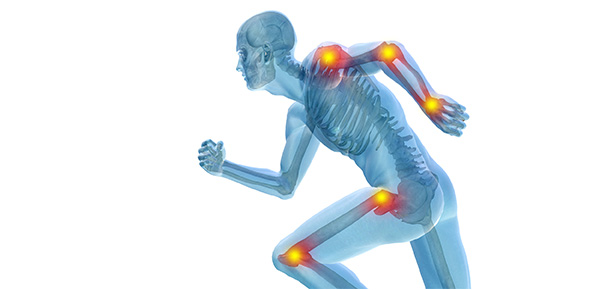Related Flashcards
Related Topics
Cards In This Set
| Front | Back |
|
Skeletal cartilage
|
Is made of some variety of cartilage tissue, which consists primarily of water. The high water content of cartilage accounts for its resilience, that is, its ability to spring back to its original shape after being compressed.
|
|
The perichondrium
|
The perichondrium acts like a girdle to resist outward expansion when the cartilage is compressed. Additionally, the perichondrium contains the blood vessels from which nutrients diffuse through the matrix to reach the cartilage cells. This mode of nutrient delivery limits cartilage thickness.
|
|
Three types of cartilage tissue in the body:
|
Hyaline
elastic fibrocartilage All three types have the same basic components - cells called chondrocytes, encased in small cavities (lacunae) within an extracellular matrix containing a jellylike ground substance and fibers. The skeletal cartilages contain representatives from all three types. |
|
Hyaline cartilages
|
Which look like frosted glass when freshly exposed, provide support when flexibility and resilience. They are they most abundant skeletal cartilages.
1. articular cartilages, which cover the ends of most bones at movable joints; 2. costal cartilages, which connect the ribs to the sternum (breastbone); 3. respiratory cartilages, which form the skeleton of the larynx (voicebox) and reinforce other respiratory passageways; and 4. nasal cartilages, which support the external nose. |
|
Elastic cartilages
|
Look very much like hyaline cartilages, but they contain more stretchy elastic fibers and so are better able to stand up to repeated bending. They are found in only two skeletal locations, the external ear and the epiglottis (the flap that bends to cover the opening of the larynx each time we swallow).
|
|
Fibrocartilages
|
Are highly compressible and have great tensile strength. The perfect intermediate between hyaline and elastic cartilages, fibrocartilages consis of roughly parallel rows of chondrocytes alternating with thick collagen fibers. Fibrocartilages occur in sites that are subjected to both heavy pressure and stretch, such as the padlike cartilages (menisci) of the knee and the discs between vertebrae.
|
|
Appositional growth
|
In appositional growth, cartilage-forming cells in the surrounding perichondrium secrete new matrix against the external face of the existing cartilage tissue.
|
|
Interstitial growth
|
In interstitial growth, the lacunae-bound chondrocytes divide and secrete new matrix, expanding the cartilage from within. Typicall, cartilage growth ends during adolescence when the skeleton stops growing.
|
|
Axial skeleton
|
The axial skeleton forms the long axis of the body and includes the bones of the skull, vertebral column, and rib cage. Generally speaking these bones are most involved in protecting, supporting, or carrying other body parts.
|
|
Appendicular skeleton
|
The appendicular skeleton consists of the bones of the upper and lower limbs and the girdles (shoulder bones and hip bones) that attach the limbs to the axial skeleton. Bones of the limbs help us to get from pace to place (locomotion) and to manipulate our enviroment.
|
|
Long bones
|
As their name suggests, are considerably longer than they are wide. A long bone has a shaft plus two ends. All limb bones except the patella (kneecap) and the wrist and ankle bones are long bones. Notice they are named for their shape, not their size. The three bones in each of your fingers are long bones, even though they are very small.
|
|
Short bones
|
Are roughly cube shaped. The bones of the wrist and ankle are examples.
|
|
Sesamoid bones
|
Are a special type of short bone that form in a tendon. They vary in size and number in different individuals. some sesamoid bones clearly act to alter the direction of pull of a tendon. The function of others is not known.
|
|
Flat bones
|
Are thin, flattened, and usually a bit curved. The sternum (breastbone), scapulae (shoulder blades), ribs, and most skull bones are flat bones.
|
|
Irregular bones
|
Have complicated shapes that fit none of the preceding classes. Examples include the vertebrae and the hip bones.
|







